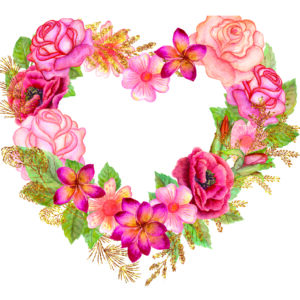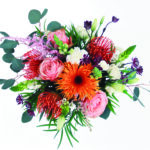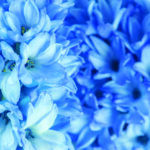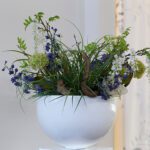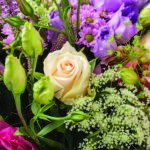The language of flowers, known as floriography, has flourished as a means of subliminal communication for thousands of years. It’s a practice noticed in art, in literature and in traditional customs, especially in cultures where decorum is emphasized. This was especially true in the Victorian age, in both the United States and England, as a means of properly communicating what couldn’t be spoken in public, and eventually became a sort of game for the society set, who would use their floral dictionaries to decode arrangements and floral decorations.
So it came to be that red roses symbolized powerful emotions: romance, love, beauty, courage; white daisies spoke of innocence; and pink carnations were for expressing gratitude. But isn’t it interesting that what is meant to be a token of admiration—the gifting of flowers—could have been reduced into something so calculated? Deep affections, which feel utterly unique to the involved parties, could be reduced to a system everyone is using—and one that could potentially even fail, if the gesture is misinterpreted.
Perhaps it’s believable. In reality, what developed in earnest for the silenced lovers and friends of the Victorian Age has been diluted into a necessity, part of the more than $22 billion Valentine’s Day spending spree that equates to more than $150 per person, according to WalletHub.1
Hold up! This is not a Valentine’s Day hate piece. I love Valentine’s Day. I love romantic dinners and presents and grand gestures of love. I love receiving them, I love planning them, I love hearing stories about them. And while I recognize that living in a stuffy Victorian era likely had drawbacks, I don’t think lovers of the age were repressed into a generic system of communication. Back then, a man gave a woman a red rose because he meant it. So let’s not cancel the language of flowers just yet. Let’s have a look at the how and the why.
Leezl Gnatovich, florist and owner of Nellybelle General Store, says, “Flowers are a vehicle—people want them as a tool of communication.” So far, we’re on the same page as our high-collared ancestors. But when it comes to design and building floral arrangements that mean something, “You have to get down to your roots. It’s innate. It’s guttural,” Leezl explains.
Call her up and ask for a dozen yellow roses. “I don’t do a dozen roses,” Leezl says, though she rarely gets asked for it. Her customers call her because they trust her knowledge and eye for design. But if you ask her for yellow flowers, that’s something she wants to explore. Does it really matter that yellow roses technically stand for friendship? Actually, probably not. “Flowers are communication tools,” Leezl reiterates, “because they’re about how the giver knows the recipient. People are passionate about the things they find interesting, and the person they give those interesting things to will appreciate it most because the giver had a hand in it.”
I looked it up on the internet, and orange flowers, not surprisingly, represent excitement. Blue flowers, according to Wikipedia, are “a central symbol of inspiration for the Romanticism movement… [that] stands for desire, love and the metaphysical striving for the infinite and unreachable.” Which is… deep. And I’m thinking, yes, that could be an introspective person. Or maybe your significant other just really, really loves blue.
Sometimes, Leezl will take a flower-giver into the cooler and ask, “What flower in here wows you?” She says, “It could be something that looks odd to them and I build around that.” And when she says “build,” Leezl means it. “I look at arrangements as salad. You think, do I have greens? Oh, I have arugula and spinach. No one just wants iceberg—throw the arugula in. Greens can mean 30 different shades,” she says. “Then you put in your protein. And after that, you put in the other ingredients—cranberries, nuts. Then you have another layer. Cheese? That’s your filler flower. And your dressing is the unexpected texture at the end—your ‘peanut butter POW.’”
This work is an exercise to get to the soul level of gifting floral arrangements—which is when flowers become most like a meaningful gift. You ask all of the parts to point to a single theme, something that encapsulates the recipient’s passions or interests.
“I can ask questions like, ‘What are their hobbies?’ And if they’re a trail runner, I think, they must be in nature a lot. Maybe they notice wildflowers on the ground. Dried grasses—texture. How can I bring the outside inside?” The entire arrangement becomes completely personalized in that unspeakable way that is felt at the heart.
Maybe red roses are your favorite flower, and if your spouse brings home a dozen of them tonight, you’ll feel seen and loved. If you’re gifted a dozen red roses because you’ve been trained that such a thing signals romance, some meaning is lost—as well as a chance at real intimacy.
When Leezl is designing flowers, she says, “I want to picture the person [they’re for], know their name, ‘talk to them.’ I want to connect with them.” In the end, gifting flowers, regardless of the biological genera or the color of the petals, is meant to express something deeply felt, to turn attention to the recipient. “The best reason to honor someone with flowers is gratitude—unplanned gratitude,” Leezl says, whether it’s a day of celebration or a simple, ordinary day.
The new language of flowers, the romance of this generation, is to find a thoughtful way of making loved ones feel known. It’s an expression of love on the deepest level that honors an individual for who they are rather than lumping them into the same category as every other “special person” on a “special day.” The language of flowers might otherwise then become the language of vegetables or the language of candles, or yes, please, please, please, the language of books! It becomes less about the dialect, the “vehicles” as Leezl calls them, and more about love language in general. It is about crafting something so intended for that particular person that no floral dictionary or decoder ring is necessary to discover its meaning. It’s in the essence of the gift, plainly visible to the person most meant to see it.
1 WalletHub.com, “2022 Valentine’s Day Facts—Gifts, Money & More,” February 2, 2021

